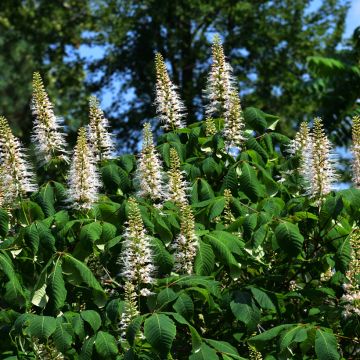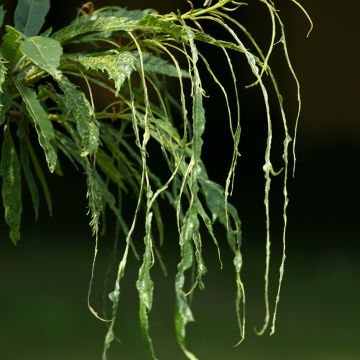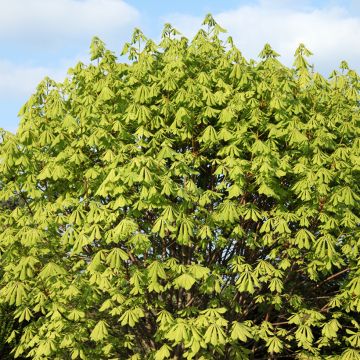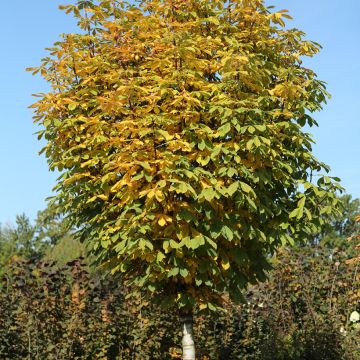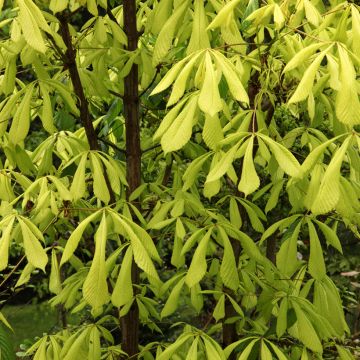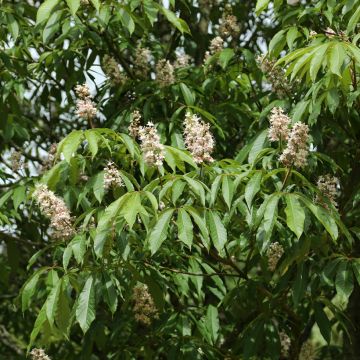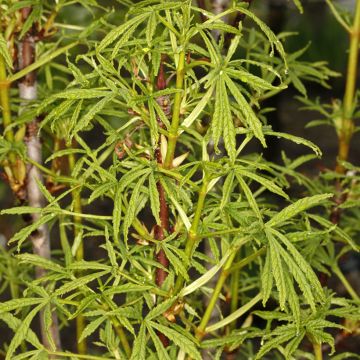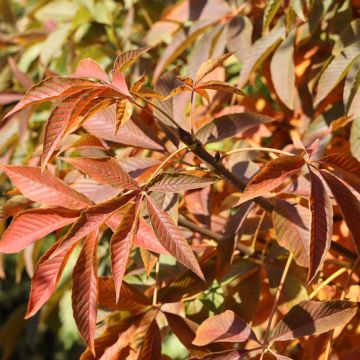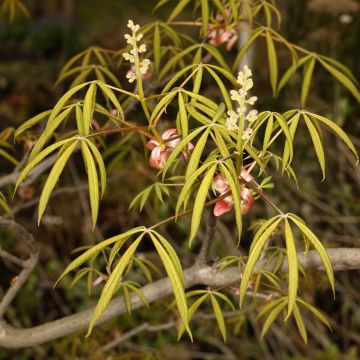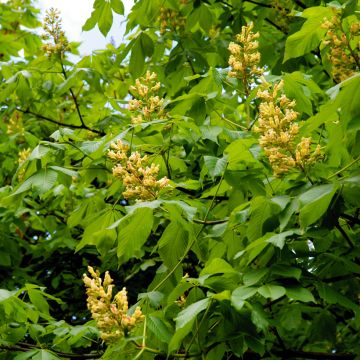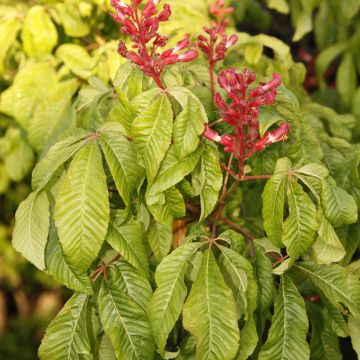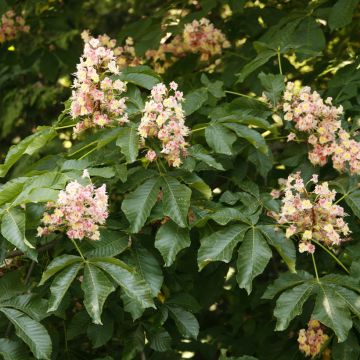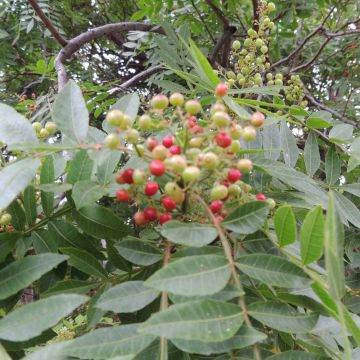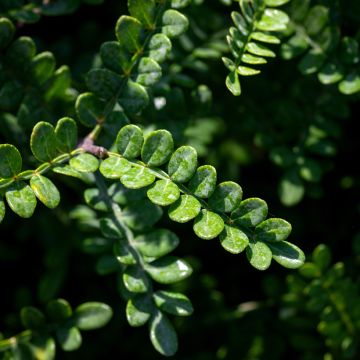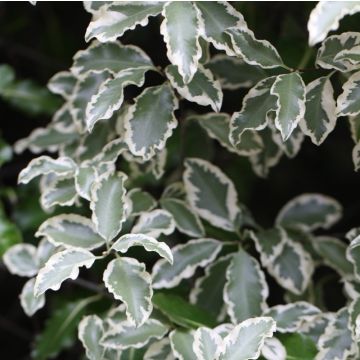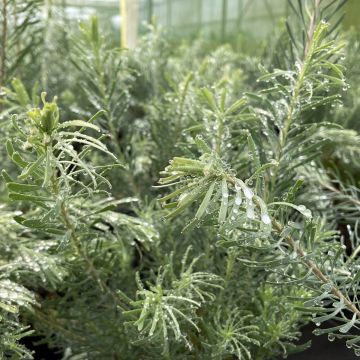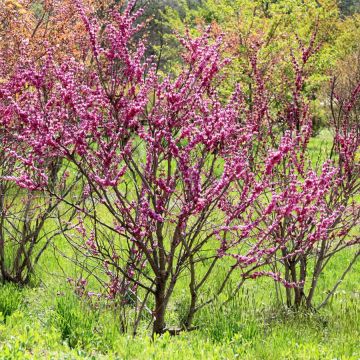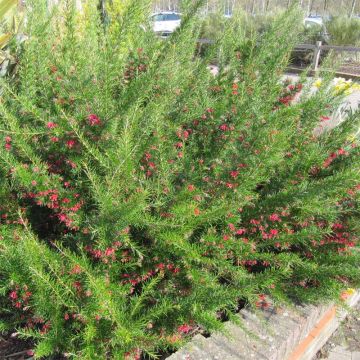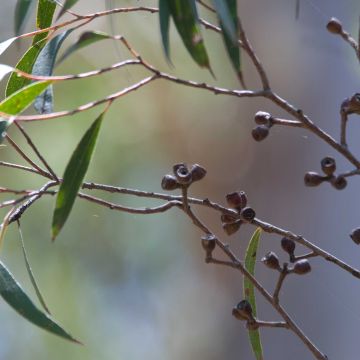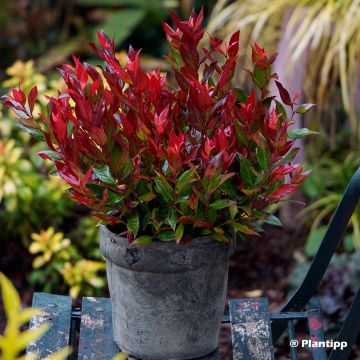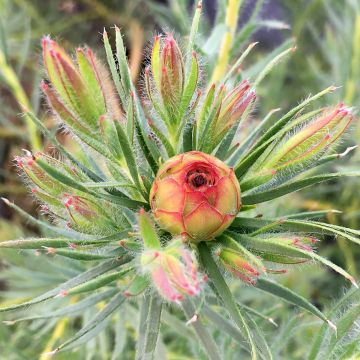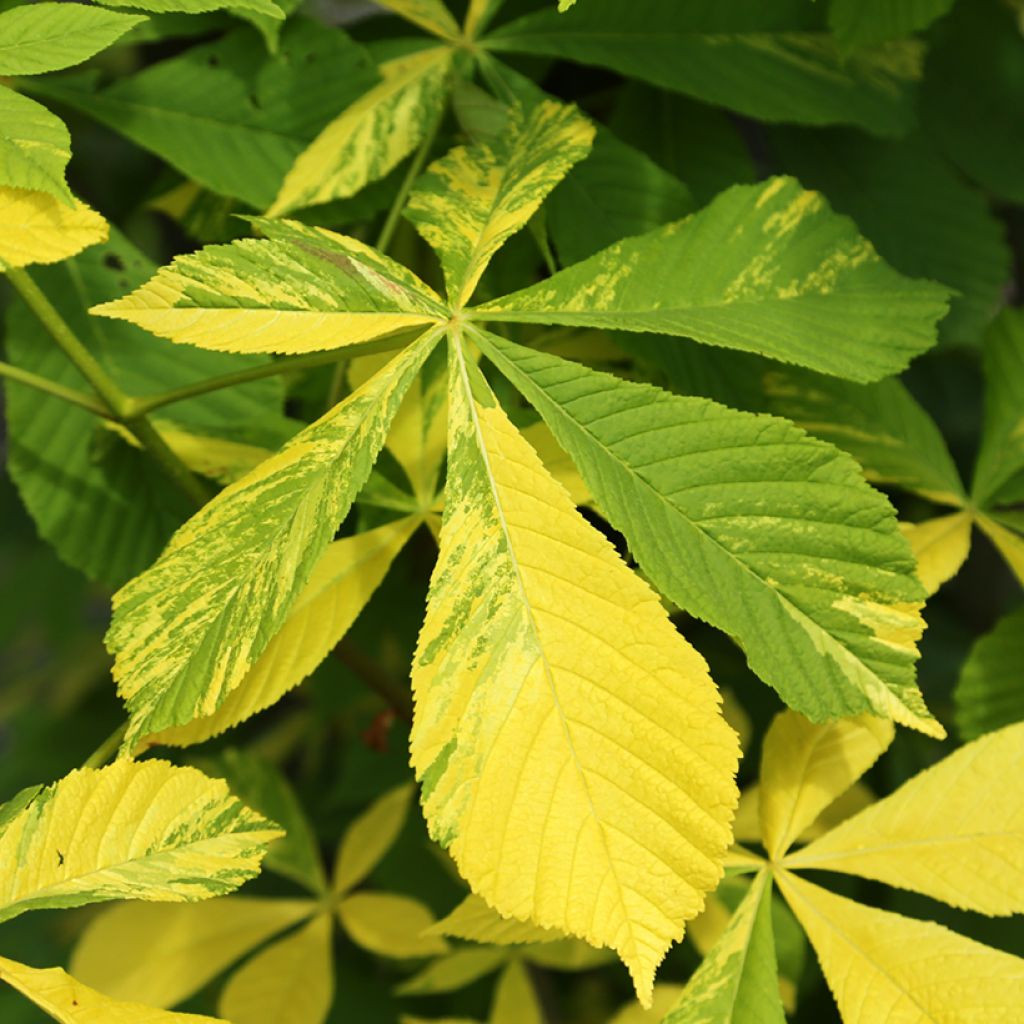

Aesculus hippocastanum Franek
Aesculus hippocastanum Franek
Aesculus hippocastanum Franek
Horse Chestnut, Conker Tree
Why not try an alternative variety in stock?
View all →This plant carries a 24 months recovery warranty
More information
We guarantee the quality of our plants for a full growing cycle, and will replace at our expense any plant that fails to recover under normal climatic and planting conditions.
Oversize package: home delivery by special carrier from €6.90 per order..
Express home delivery from €8.90.
Does this plant fit my garden?
Set up your Plantfit profile →
Description
The Aesculus hippocastanum 'Franek' is a Horse Chestnut tree that shines with light under its variegated golden foliage, which has a finer texture than its parent. This variegated form also produces delicate upright white flowers in spring and spiky fruits that fall in late summer. A tree that will delight collectors!
The Aesculus hippocastanum 'Franek' belongs to the Sapindaceae family, formerly the Hippocastanaceae family. Contrary to what its common name of Horse Chestnut suggests, the species is native to Macedonia, a region that includes northern Greece, Albania, and southern Bulgaria. It is a forest species. In nature, the common horse chestnut can reach a height of 25m with a spread of 15 to 20m.
The 'Franek' horse chestnut was discovered in Poland by Mr Franciszek Pniewski at the beginning of the century. It is a deciduous tree with an upright habit and relatively slow growth. At the age of 12, good fertile soil will reach a height of 5 to 7m with a spread of 3 to 4m. Eventually, its dimensions will approach those of the classic common horse chestnut. Its trunk and branches are covered with a brown to reddish bark, initially smooth, becoming grey and fissured with age. The crown is fairly regular and dense. The deciduous foliage appears in spring and falls in autumn. Large reddish buds covered with shiny resin can be seen on the branches in winter. The foliage consists of large leaves measuring 20 to 40cm long, divided into 5 to 7 relatively thin leaflets with toothed edges, randomly variegated with yellow and green, carried on a long petiole. Flowering occurs in May-June on branches that are already leafed out. It takes the form of upright pyramidal clusters called thyrses, measuring 15 to 20cm long and composed of small white flowers 1cm wide. After pollination by insects, the characteristic fruits form round and spiky. Each fruit can measure up to 4cm in diameter and contains only one large seed. Its root system is deep and powerful.
The Horse Chestnut 'Franek' stands out as a prominent specimen. It is very hardy and can tolerate deep, moist, and chalky soil. Collectors of unusual trees will also appreciate the Norway Maple 'Drummondi', the Variegated Beech, or the Dove Tree 'Lady Sunshine'.
Tip: This 'Franek' variety produces branches that revert to the original type, with entirely green leaves. It is advisable to remove them.
Report an error about the product description
Plant habit
Flowering
Foliage
Botanical data
Aesculus
hippocastanum
Franek
Sapindaceae
Horse Chestnut, Conker Tree
Cultivar or hybrid
Other Aesculus - Horse Chestnut
Planting and care
Horse Chestnut 'Franek' should be planted in ordinary, deep soil in spring or autumn, preferably relatively rich, slightly acidic, neutral or slightly chalky. Plant in a sunny but not hot or semi-shaded position in a spot that is well out of the way so that it can be seen. Water and mulch to keep the soil cool for young plants. Once well-rooted, it will be happy to be watered by rainshowers.
To limit pest attacks (rarely fatal), collect the leaves in autumn and dispose of them. Trapping male moths with a pheromone (funnel trap) limits attacks.
Planting period
Intended location
Care
This item has not been reviewed yet - be the first to leave a review about it.
Striking foliage shrubs
Haven't found what you were looking for?
Hardiness is the lowest winter temperature a plant can endure without suffering serious damage or even dying. However, hardiness is affected by location (a sheltered area, such as a patio), protection (winter cover) and soil type (hardiness is improved by well-drained soil).

Photo Sharing Terms & Conditions
In order to encourage gardeners to interact and share their experiences, Promesse de fleurs offers various media enabling content to be uploaded onto its Site - in particular via the ‘Photo sharing’ module.
The User agrees to refrain from:
- Posting any content that is illegal, prejudicial, insulting, racist, inciteful to hatred, revisionist, contrary to public decency, that infringes on privacy or on the privacy rights of third parties, in particular the publicity rights of persons and goods, intellectual property rights, or the right to privacy.
- Submitting content on behalf of a third party;
- Impersonate the identity of a third party and/or publish any personal information about a third party;
In general, the User undertakes to refrain from any unethical behaviour.
All Content (in particular text, comments, files, images, photos, videos, creative works, etc.), which may be subject to property or intellectual property rights, image or other private rights, shall remain the property of the User, subject to the limited rights granted by the terms of the licence granted by Promesse de fleurs as stated below. Users are at liberty to publish or not to publish such Content on the Site, notably via the ‘Photo Sharing’ facility, and accept that this Content shall be made public and freely accessible, notably on the Internet.
Users further acknowledge, undertake to have ,and guarantee that they hold all necessary rights and permissions to publish such material on the Site, in particular with regard to the legislation in force pertaining to any privacy, property, intellectual property, image, or contractual rights, or rights of any other nature. By publishing such Content on the Site, Users acknowledge accepting full liability as publishers of the Content within the meaning of the law, and grant Promesse de fleurs, free of charge, an inclusive, worldwide licence for the said Content for the entire duration of its publication, including all reproduction, representation, up/downloading, displaying, performing, transmission, and storage rights.
Users also grant permission for their name to be linked to the Content and accept that this link may not always be made available.
By engaging in posting material, Users consent to their Content becoming automatically accessible on the Internet, in particular on other sites and/or blogs and/or web pages of the Promesse de fleurs site, including in particular social pages and the Promesse de fleurs catalogue.
Users may secure the removal of entrusted content free of charge by issuing a simple request via our contact form.
The flowering period indicated on our website applies to countries and regions located in USDA zone 8 (France, the United Kingdom, Ireland, the Netherlands, etc.)
It will vary according to where you live:
- In zones 9 to 10 (Italy, Spain, Greece, etc.), flowering will occur about 2 to 4 weeks earlier.
- In zones 6 to 7 (Germany, Poland, Slovenia, and lower mountainous regions), flowering will be delayed by 2 to 3 weeks.
- In zone 5 (Central Europe, Scandinavia), blooming will be delayed by 3 to 5 weeks.
In temperate climates, pruning of spring-flowering shrubs (forsythia, spireas, etc.) should be done just after flowering.
Pruning of summer-flowering shrubs (Indian Lilac, Perovskia, etc.) can be done in winter or spring.
In cold regions as well as with frost-sensitive plants, avoid pruning too early when severe frosts may still occur.
The planting period indicated on our website applies to countries and regions located in USDA zone 8 (France, United Kingdom, Ireland, Netherlands).
It will vary according to where you live:
- In Mediterranean zones (Marseille, Madrid, Milan, etc.), autumn and winter are the best planting periods.
- In continental zones (Strasbourg, Munich, Vienna, etc.), delay planting by 2 to 3 weeks in spring and bring it forward by 2 to 4 weeks in autumn.
- In mountainous regions (the Alps, Pyrenees, Carpathians, etc.), it is best to plant in late spring (May-June) or late summer (August-September).
The harvesting period indicated on our website applies to countries and regions in USDA zone 8 (France, England, Ireland, the Netherlands).
In colder areas (Scandinavia, Poland, Austria...) fruit and vegetable harvests are likely to be delayed by 3-4 weeks.
In warmer areas (Italy, Spain, Greece, etc.), harvesting will probably take place earlier, depending on weather conditions.
The sowing periods indicated on our website apply to countries and regions within USDA Zone 8 (France, UK, Ireland, Netherlands).
In colder areas (Scandinavia, Poland, Austria...), delay any outdoor sowing by 3-4 weeks, or sow under glass.
In warmer climes (Italy, Spain, Greece, etc.), bring outdoor sowing forward by a few weeks.

































